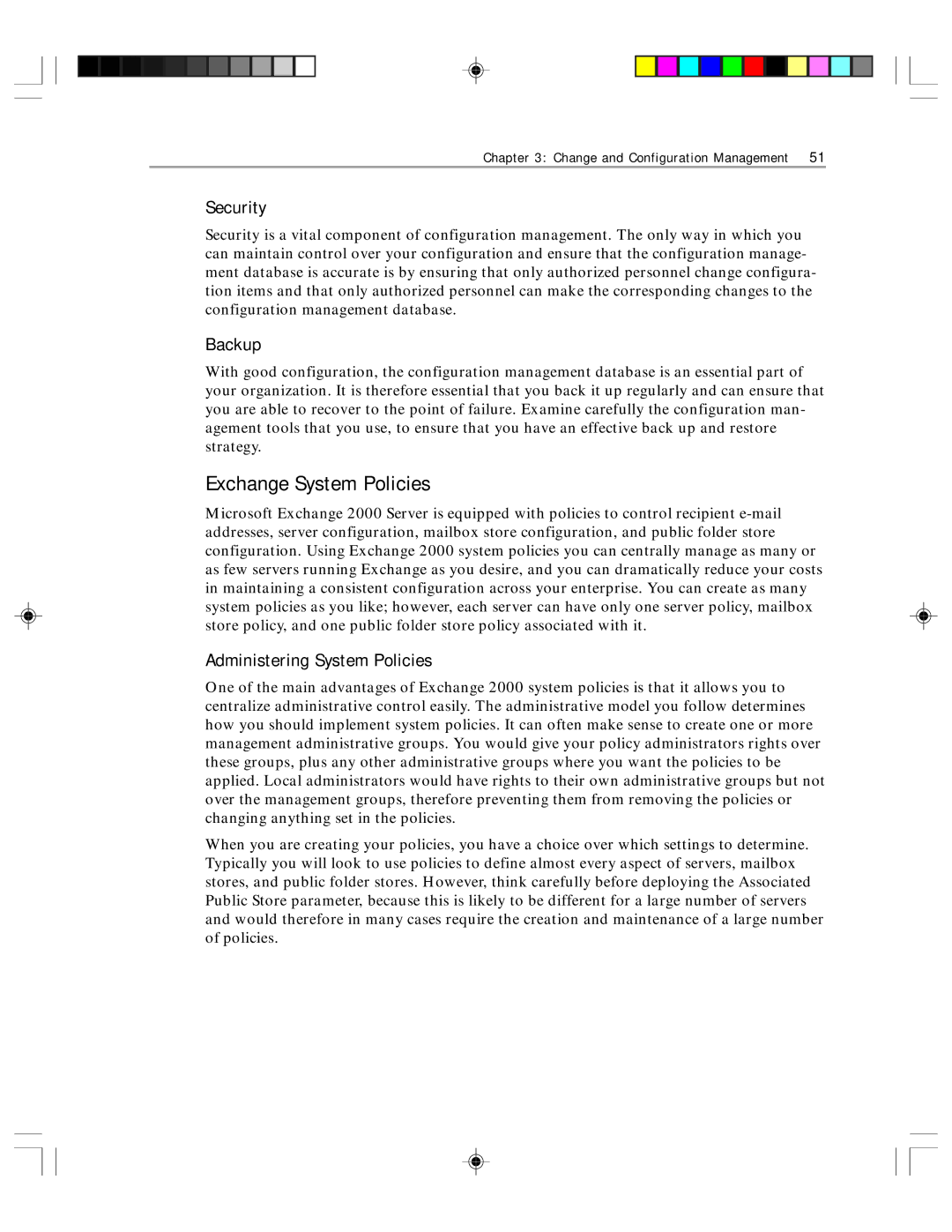
Chapter 3: Change and Configuration Management 51
Security
Security is a vital component of configuration management. The only way in which you can maintain control over your configuration and ensure that the configuration manage- ment database is accurate is by ensuring that only authorized personnel change configura- tion items and that only authorized personnel can make the corresponding changes to the configuration management database.
Backup
With good configuration, the configuration management database is an essential part of your organization. It is therefore essential that you back it up regularly and can ensure that you are able to recover to the point of failure. Examine carefully the configuration man- agement tools that you use, to ensure that you have an effective back up and restore strategy.
Exchange System Policies
Microsoft Exchange 2000 Server is equipped with policies to control recipient
Administering System Policies
One of the main advantages of Exchange 2000 system policies is that it allows you to centralize administrative control easily. The administrative model you follow determines how you should implement system policies. It can often make sense to create one or more management administrative groups. You would give your policy administrators rights over these groups, plus any other administrative groups where you want the policies to be applied. Local administrators would have rights to their own administrative groups but not over the management groups, therefore preventing them from removing the policies or changing anything set in the policies.
When you are creating your policies, you have a choice over which settings to determine. Typically you will look to use policies to define almost every aspect of servers, mailbox stores, and public folder stores. However, think carefully before deploying the Associated Public Store parameter, because this is likely to be different for a large number of servers and would therefore in many cases require the creation and maintenance of a large number of policies.
